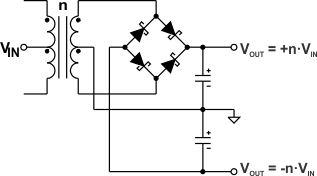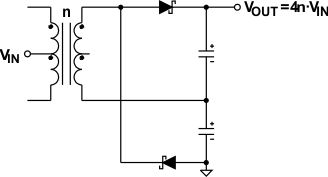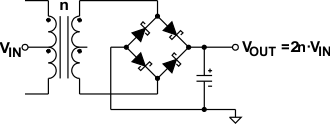SLLSFW9A April 2024 – July 2024 ISO7741TA-Q1 , ISO7741TB-Q1
PRODUCTION DATA
- 1
- 1 Features
- 2 Applications
- 3 Description
- 4 Pin Configuration and Functions
-
5 Specifications
- 5.1 Absolute Maximum Ratings
- 5.2 ESD Ratings
- 5.3 Recommended Operating Conditions
- 5.4 Thermal Information
- 5.5 Power Ratings
- 5.6 Insulation Specifications
- 5.7 Safety-Related Certifications
- 5.8 Safety Limiting Values
- 5.9 Electrical Characteristics Transformer
- 5.10 Electrical Characteristics—5V Supply
- 5.11 Supply Current Characteristics—5V Supply
- 5.12 Electrical Characteristics—3.3V Supply
- 5.13 Supply Current Characteristics—3.3V Supply
- 5.14 Electrical Characteristics—2.5V Supply
- 5.15 Supply Current Characteristics—2.5V Supply
- 5.16 Switching Characteristics—5V Supply
- 5.17 Switching Characteristics—3.3V Supply
- 5.18 Switching Characteristics—2.5V Supply
- 5.19 Insulation Characteristics Curves
- 5.20 Typical Characteristics
- 6 Parameter Measurement Information
- 7 Detailed Description
- 8 Application and Implementation
- 9 Device and Documentation Support
- 10Revision History
- 11Mechanical, Packaging, and Orderable Information
パッケージ・オプション
デバイスごとのパッケージ図は、PDF版データシートをご参照ください。
メカニカル・データ(パッケージ|ピン)
- DW|16
サーマルパッド・メカニカル・データ
発注情報
8.2.4.1 Higher Output Voltage Designs
The device can drive push-pull converters that provide high output voltages of up to 30V, or bipolar outputs of up to ±15V. Using commercially available center-tapped transformers, with relatively low turns ratios of 0.8 to 5, requires different rectifier topologies to achieve high output voltages. Figure 8-12 to Figure 8-14 show some of these topologies together with the respective open-circuit output voltages.


